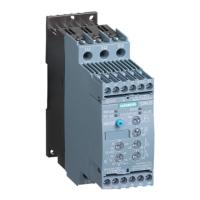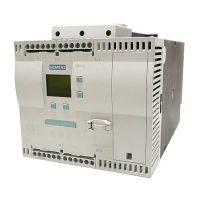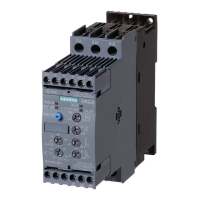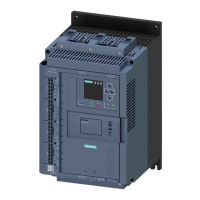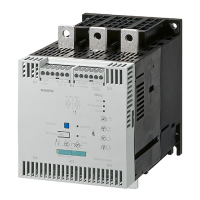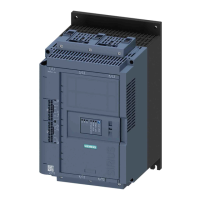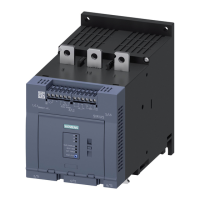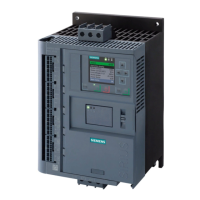Device Functions
SIRIUS 3RW44 System Manual
GWA 4NEB 535 2195-02 DS 04
6-13
6.3.3 DC Braking / Combined Braking
In DC braking or combined braking, the coasting down / natural run-down of the
load is shortened.
The soft starter imposes a (pulsating) DC current in phases L1 and L3 on the
motor stator. This current creates a permanent magnetic field in the stator. Since
the rotor is still rotating due to its mass reactance, currents are induced into the
short rotor winding, creating a braking torque.
Notice
The DC braking / combined braking stopping function is not possible in an inside
delta circuit.
Note
The pulsating DC current loads the network asymmetrically and the motor and
the branch must be dimensioned accordingly for the higher current load during
the stopping procedure. A larger dimensioned soft starter may be necessary.
Note
Two braking versions are available:
Combined braking:
Use the combined braking function if applications with small mass reactances
(centrifugal masses) are to be stopped
(J
Load
≤ J
Motor
). The real stopping time can vary during braking processes when
the combined braking function is applied. Use the function DC braking if a
consistently long braking time is to be achieved.
DC braking:
Use the DC braking function if applications with larger mass reactances
(centrifugal masses) are to be stopped
(J
Load
≤ 5 x J
Motor
).
An external brake contactor is required for the DC braking function!
Caution
Risk of damage to property.
A combination of electronic motor overload protection and evaluation of a
temperature sensor integrated into the motor is recommended for optimum
motor protection.
Stopping mode: combined braking
If combined braking is selected, the dynamic braking torque, DC braking torque
and stopping time parameters can be configured on the starter.
Dynamic braking
torque
The dynamic braking torque determines the extent of the braking effect at the
start of the braking process in order to reduce the rotational speed of the motor.
The braking process is then continued using the DC braking torque function.
DC braking torque The height of the DC braking torque determines the brake force of the motor.
If the motor accelerates again during DC braking, the dynamic braking torque
must be increased.
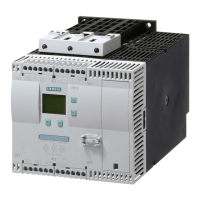
